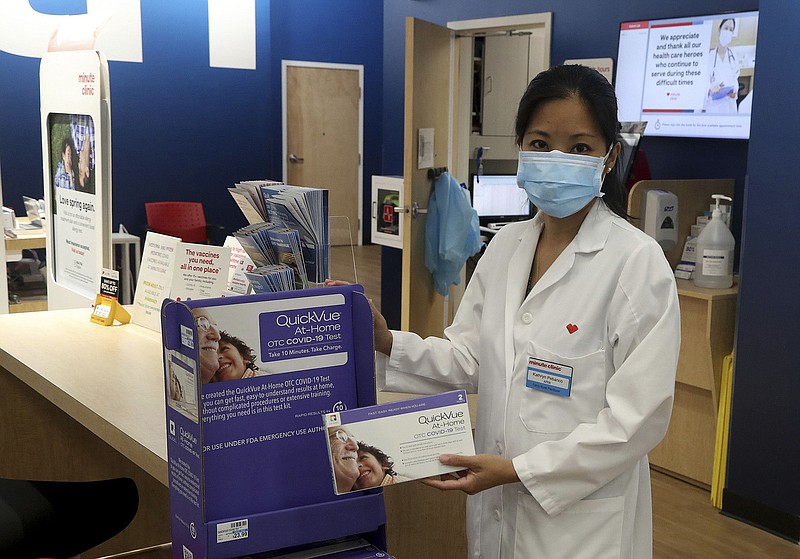FORT LAUDERDALE, Fla. -- With new COVID cases in Florida on the rise, taking an easy-to-get rapid test can give you quick results.
But the timing has become tricky.
If you have COVID-19 symptoms, such as fever, cough, congestion or a sore throat, test yourself immediately but know a negative result may mean you swabbed too early.
"Most of the time, people are not getting a positive result until three to five days after they start to show symptoms," said Kathryn Pebanco, a nurse practitioner at the MinuteClinic in Plantation.
Pebanco said you should repeat a rapid test a few days later if you get a negative result and have COVID symptoms or were in close contact with someone who tested positive. Meanwhile, take precautions, particularly if you are coming in contact with someone at high risk of severe disease if they get infected.
Some researchers believe the virus is more heavily concentrated in your throat and mouth before it makes its way to the nose. Now there is some discussion of adding a throat swab to test kits to make them more accurate.
The Centers for Disease Control and Prevention says, "Multiple negative rapid tests increase the confidence that you are not infected with the virus that causes COVID-19."
If you're positive, begin isolating immediately -- even if you don't have symptoms. False positives are rare.
How rapid tests work
Rapid tests work by detecting pieces of proteins on the surface of the coronavirus and only appear when you have enough of the virus in your system to be detected.
The tests, while easy to do at home, are less sensitive early in an infection and work best when you are showing symptoms and have a high viral load.
The darker the line is (and the quicker it appears within the minutes-long wait period), the higher your viral load and the more infectious you are at that point in time. A faint line, however, doesn't mean you are not infectious, especially if you are feeling sick.
If a rapid test produces a negative result but you have a cough, fever or other symptoms, the CDC recommends you also do a PCR test. PCR tests will show a positive result up to two days sooner in the infection cycle because they are much more sensitive and pick up on low viral loads. PCR tests, however, are processed in labs and can take 24-48 hours to get a result.
Timing matters: If you don't have COVID symptoms and want to make sure you are COVID-free before attending an event, you will want to take a rapid test right before. Taking a test the day or evening in advance of the event won't work as well because your viral load can change.
Testing to end isolation
The CDC says you can end isolation after five days if you no longer have symptoms or if they are resolving. However, it may take much longer than five days to get a negative test result.
Everyone clears the virus from their system at a different pace.
"Probably after five days there is not enough virus to share with others," said Dr. Aileen Marty, an infectious disease expert with Florida International University's Herbert Wertheim College of Medicine. "But it isn't going to be the same for every person. It is difficult to know when you are not infectious. If you get a negative, the odds are good you are done with shedding. If you are still positive, you may or may not be a risk."
Epidemiologist Michael Mina looks at rapid tests this way, according to his Twitter: "If there's enough virus to detect, there's enough virus to infect."
Marty suggests wearing a mask for 10 days after symptoms begin or after receiving a positive result.
Research shows by Day 11, it's safe to conclude you no longer are infectious, regardless of what the test shows.
With nearly dozens of antigen rapid tests on the market, Marty advises using one of the 49 that are FDA-approved.

